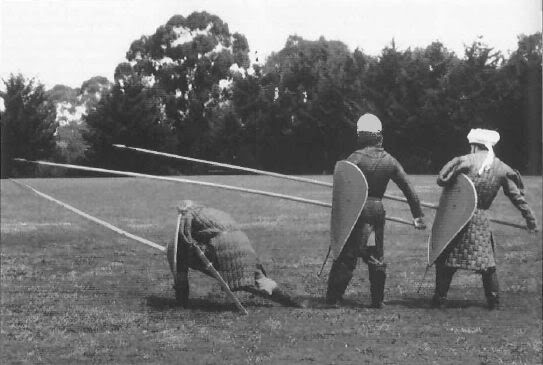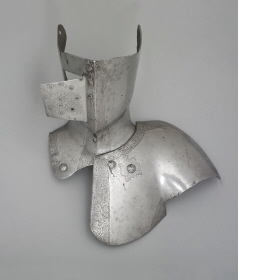| Benjamin H. Abbott wrote: |
| The most recent scholarship on the sarissa rejects the heavy, blade head as misidentified and employs what we know about fifteenth- and sixteenth-century pikes as a basis for understanding. The epistemological validity of this approach remains controversial.
As far as the linked posts go, I'm under the impression that Macedonian phalanxes rarely if ever matched the valor or ferocity of the Swiss. (By most accounts, no contemporary pikemen from other nations did either.) While Alexander relied on his cavalry, the Swiss won their fame almost strictly through the pike and halberd. Also, "push" just means "thrust." I doubt pike blocks ever engaged in the bizarre manner Clausewitz describes. (Why in the world would pikemen choose to not employ their primary weapons?) And, as I've mentioned repeatedly, Florange's account of Novara shows pike combat could be exceedingly lethal. Pike thrusts hit as hard as or harder than other staff weapons; di Grassi went so far as invoke geometry to explain the pike's potency. Commanders didn't universally oppose the fencing method: some encouraged it. |
Thanks for the information on the new interpretation of the sarissa finds. It's my opinion that this weapon in its original design shared characteristics with the cornel wood spears introduced among cavalry due to Persian influence. The difference was that there was a construction to stick these spears together and have one spear have a normal head while the other had the sauroter that would on a normal Greek spear be employed when the head snapped off. The Macedonian cavalry in turn adopted their spear from Skythian heavy cavalry.
It seems clear that the Macedonians weren't the normal heavy infantry country with craftsmen and a wealthy middle class, so their infantry was lightly not so heavy, with the best armoured concentrated in the most exposed positions.
The shoving is not a bad idea in my opinion. This blog by a researcher on crowd mechanics highlights how important equipment to secure breathing is in order to maintain intense pressure in a crowd and rip the enemy crowd apart (as the basic of hoplite warfare, different from Hanson's model btw.)
http://hollow-lakedaimon.blogspot.de/2008/11/...model.html
The targeteers of the Macedonian phalanx and the cuirass equipped troops of the Renaissance could also have done that, especially if the terrain made it a bad idea to lower the pikes at the area of the clash.

